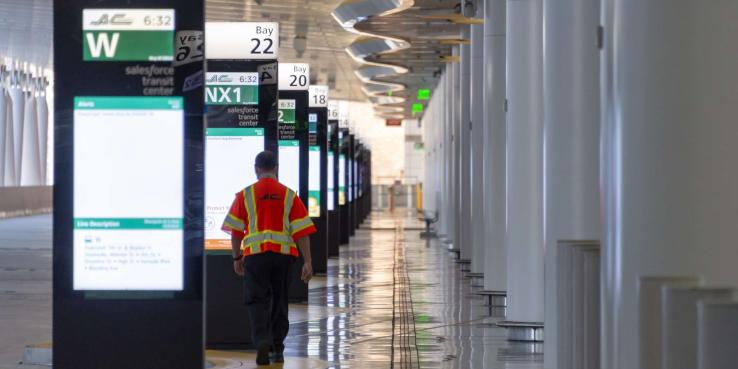This article is the first in a series on how to help public transit emerge from this crisis stronger than ever. Other articles in the series are linked at the bottom of this page.
The COVID-19 pandemic that has killed hundreds of thousands of people around the world also presents a profound threat to the future of transit. As people shelter in place and practice social distancing, transit systems are experiencing plummeting ridership and revenue. Parking fees, bridge tolls and other transportation-related fees are drying up, as well. To compound the challenges, some have suggested that density heightens the risk of contracting the disease, which has inspired not only anti-transit sentiment but arguments against cities themselves.
It’s hard to speculate how the future will play out when the world today looks so different from the one we inhabited just two months ago. Even if a vaccine or treatment is developed soon, the pandemic is likely going to dominate life in cities for many months, if not years.
One thing is certain: We will still need transit.
It’s a lifeline for people who have fewer resources to cope with the pandemic and its outfall, a group that is only going to grow with job losses getting bigger and bigger every week.
It enables essential workers to get to and from work — indeed, nearly a third of all transit commuters are essential workers: 33% statewide and 31% in the Bay Area.
And this means it is a lifeline for all of us, providing a critical leg in the supply chain of essential services we all rely on. We will depend on transit not just to get through this but to survive in the future. And, in the long-run, transit is essential for meeting our climate goals, as 40% of greenhouse gas emissions come from transportation. Investing in transit is the only way to bring the economy of our urban region back without total gridlock.
In response to the COVID-19 crisis, Bay Area transit agencies have quickly shifted focus. In San Francisco, Muni has reduced service and has stopped running three-quarters of its routes. Like many agencies, the Santa Clara Valley Transportation Authority has stopped collecting fares to allow for rear-door boarding and social distancing, and is running reduced service. BART has dramatically reduced service as well. The federal stimulus package passed at the end of March provides needed operating money to help backfill losses for a few months, but it’s not enough. Without additional funding, the Bay Area is facing a $1.3 billion gap in transit funding over the next 18 months.
For the foreseeable future, transit agencies will be asked to do more with less. They will be faced with shrunken budgets that make it impossible to run the amount of service that riders have become accustomed to, or to ensure that basic urban transit needs are met — let alone build the capital projects that would allow for expanded service. For most, this is an existential crisis. This stark reality is that this shortfall means there will most likely be more infrequent service and higher fares — when riders are least able to afford it. Some services could stop running altogether. If they do, it will make it that much harder to get running again when the economy recovers.
We believe that this future is unacceptable. Failing to revive transit hurts everyone. If we do fall short in bringing it back, far too many people will be left behind and the road to recovery will be crowded with cars. In the current circumstances, it is far too easy to let fear and scarcity drive our thinking and decision-making. When this happens, we stop investing in the shared infrastructure that we need to survive as a society.
Our next article will look at what’s needed to keep transit safe for operators and riders alike.
Read SPUR’s letters supporting stimulus funding for transit:
Deploy COVID-19 Emergency Funding for Immediate and Long-Term Regional Transit Needs
Include Another $1.3 Billion for Transit Funding in Fourth Federal Rescue Package
Read the other articles in this series:
We Need Consistent Practices Across the Region to Make Transit Safe
